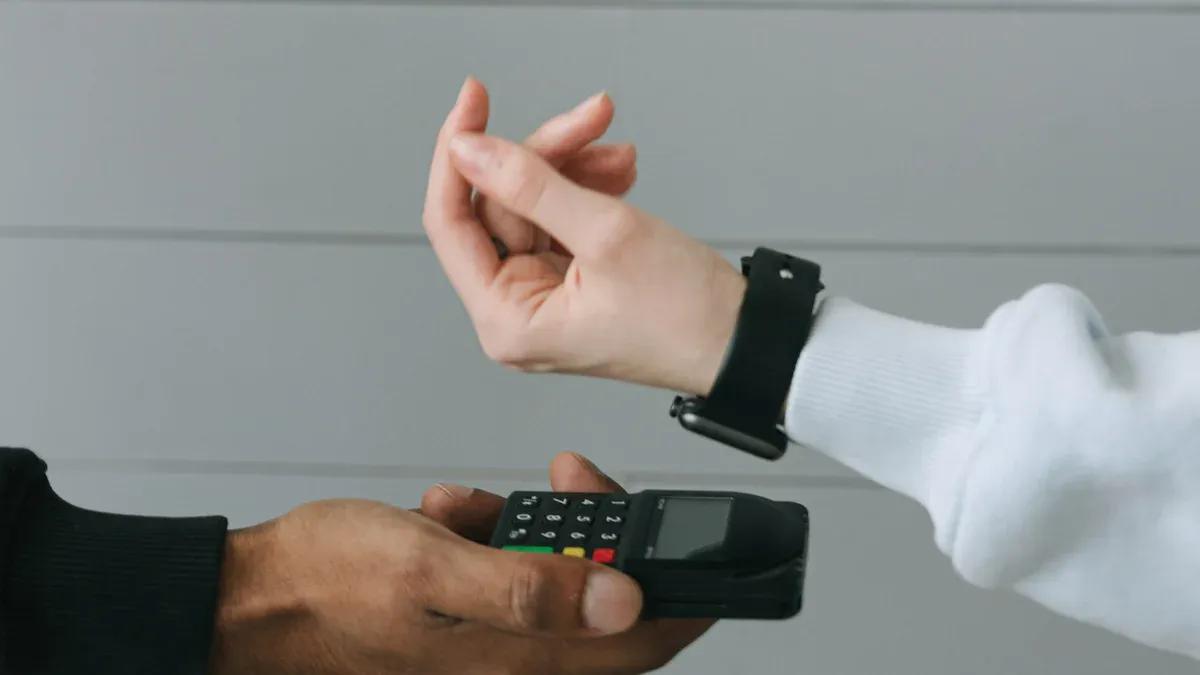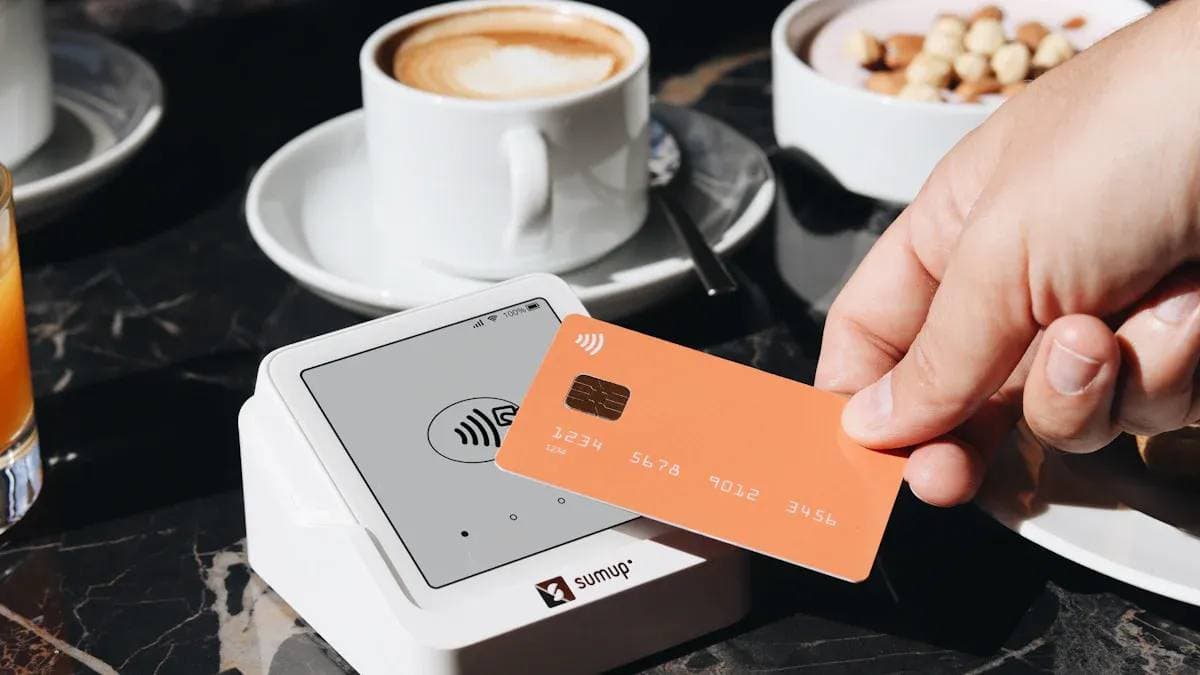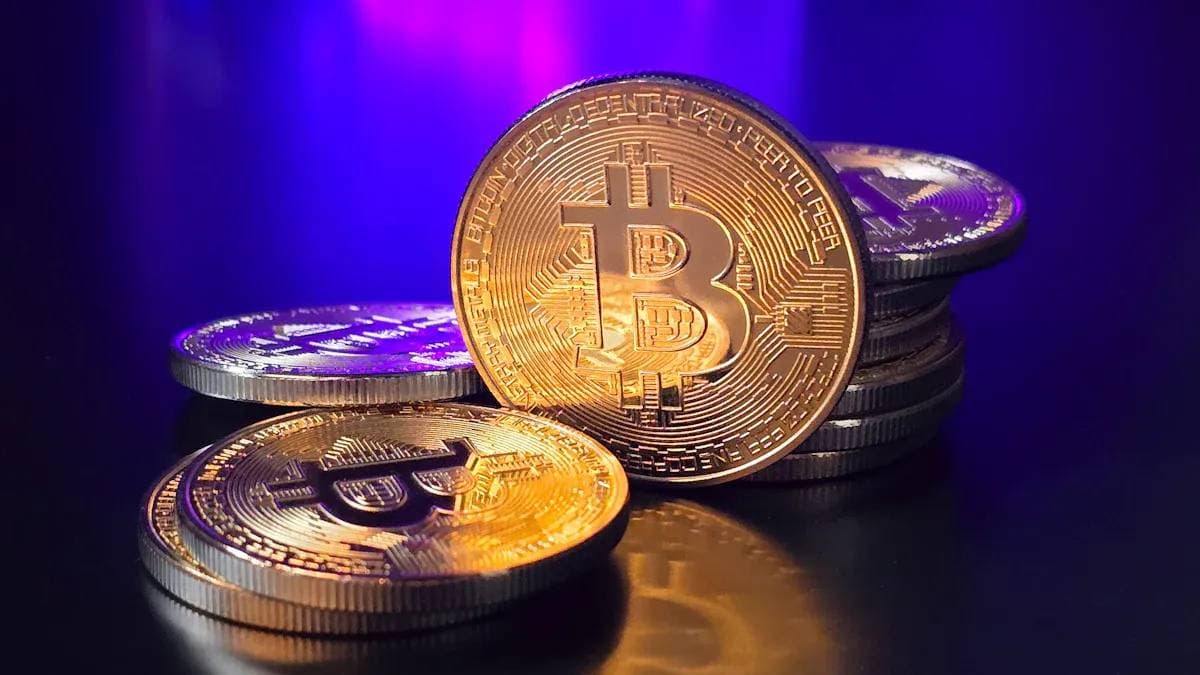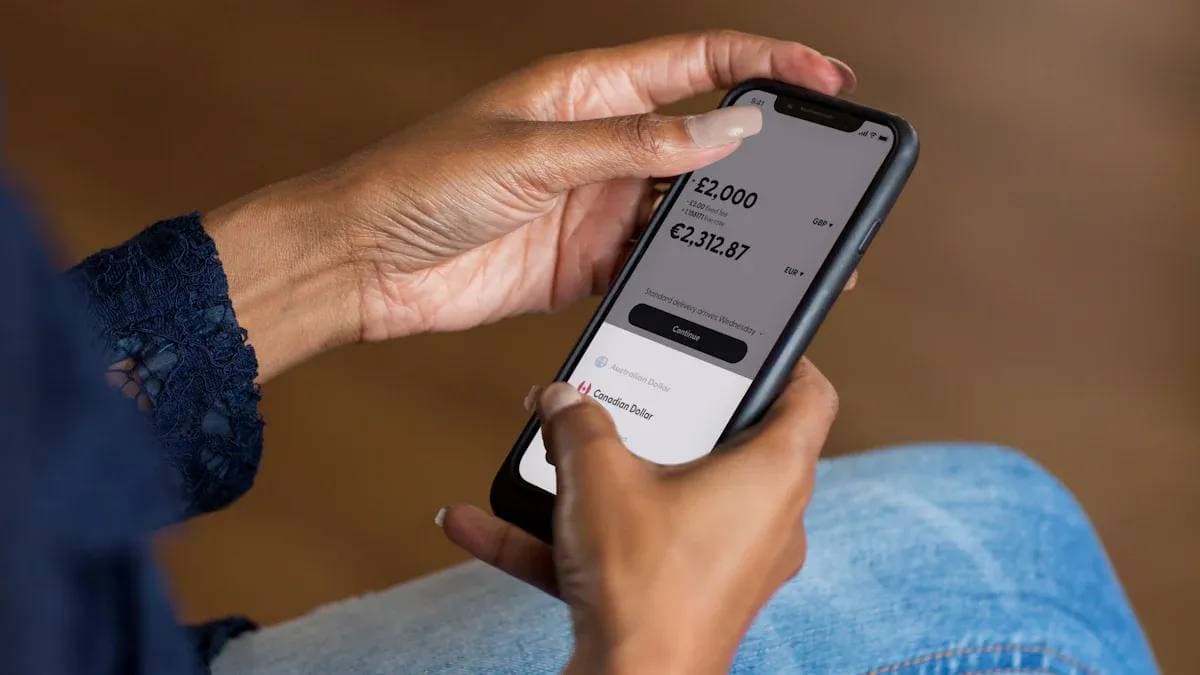- EasyCard
- Trade
- Help
- Announcement
- Academy
- SWIFT Code
- Iban Number
- Referral
- Customer Service
- Blog
- Creator
Must-Read for Beginners: What Exactly Are the Costs of USDT Remittances?

Image Source: pexels
Are you still troubled by traditional wire transfers? The average fee for an international remittance is about 44 USD, and it usually takes 1 to 5 business days to arrive. In contrast, USDT remittances attract many people with their speed and low costs.
But are the costs really as low as they seem? While enjoying the convenience, you might ask: What fees do you actually need to pay to complete a USDT remittance?
This stablecoin (USDT) remittance fee guide will unveil all potential fees for you, making you a savvy user.
Key Takeaways
- USDT remittances are faster and cheaper than traditional wire transfers, but there are still various costs.
- When buying USDT, pay attention to platform handling fees and the spread between buy and sell prices.
- When transferring USDT, choosing the TRC-20 network has the lowest fees and fast speed, making it the best choice.
- When selling USDT, also pay attention to spreads and hidden fees on C2C platforms.
- Choosing reputable platforms, using limit orders, and monitoring network fees can help you save money.
Cost Structure for Buying USDT

Image Source: pexels
To complete a USDT remittance, the first step is to hold USDT. You can convert USD or other fiat currencies into USDT through various channels. This purchase process itself generates your first core cost. Let’s break it down in detail.
Platform Trading Fees
No matter which platform you use to buy USDT, the platform needs to charge a service fee to maintain operations; this is the trading fee. This fee is usually a percentage of your transaction amount.
You can buy through centralized exchanges (CEX) or peer-to-peer (P2P) trading markets. Fee standards vary greatly across platforms. For example, the fee structures of some mainstream exchanges are as follows:
| Exchange | Instant Buy/Sell Fee | Maker Fee | Taker Fee |
|---|---|---|---|
| Coinbase | Up to 3.99% | 0.40% - 0% | 0.60% - 0.05% |
| Binance | 2% + Bank Fee | 0.10% | 0.10% |
| Kraken | 1% | 0.25% - 0% | 0.40% - 0.08% |
Beginner Tip:Understanding Maker and Taker
You will encounter these two terms in trading. Simply put:
- Maker: You set a price and wait for others to match, providing liquidity to the market, with lower fees.
- Taker: You immediately match at the current market price, taking liquidity from the market, with higher fees.
Some platforms like Biyapay may offer more direct purchase methods. When buying coins via Hong Kong licensed bank transfers, the fee structure may be simpler and clearer.
Purchase Premium and Spread
In addition to explicit fees, you need to watch for a hidden cost—the spread.
The spread is the difference between the buy and sell prices of USDT at the same time. For example, the platform shows a buy price of 1.005 USD and a sell price of 0.995 USD; the 0.01 USD in between is the spread. As a buyer, you always buy at the higher price; as a seller, you always sell at the lower price. This difference is one of the profit sources for the trading platform or market makers.
Asset liquidity determines the size of the spread. USDT, as a high-volume stablecoin, has excellent liquidity, so the spread is usually small. But for large transactions, this tiny gap accumulates into a considerable cost. Before purchasing, you should focus on how much USDT you ultimately receive, not just the exchange rate itself.
USDT Transfer Network Fees

Image Source: unsplash
After buying USDT, the next step is to transfer it to the recipient. This transfer process generates the second core cost: network fee (Network Fee), also commonly called “miner fee” or “Gas fee”.
What Is a Network Fee
You can think of the blockchain as a huge public ledger; every transfer needs someone (miners or validators) to record and confirm it. The network fee is the labor fee you pay them to process this transaction.
This fee ensures the normal operation and security of the network. When the network is very busy with many people transferring at the same time, you need to pay higher fees to prioritize your transaction, just like surge pricing for rides during peak hours.
Key Tip: Network fees are dynamic. They are mainly affected by current network congestion. The more congested, the higher the fee; the smoother, the lower the fee.
Mainstream Blockchain Fee Comparison
USDT exists on multiple different blockchain networks (public chains), each with vastly different transfer speeds and fees. Choosing different networks can make your transfer costs worlds apart.
Here is a comparison of several mainstream public chains:
| Network (Protocol) | Fee (Approx.) | Speed | Features |
|---|---|---|---|
| TRON (TRC-20) | About 1 USD | Fast | Extremely low fees, fast speed, the most mainstream choice for small transfers. |
| Ethereum (ERC-20) | 5 - 30 USD | Slower | Highest fees, but most mature ecosystem, strongest recognized security, suitable for large amounts or DeFi interactions. |
| BSC (BEP-20) | About 0.3 USD | Very Fast | Binance Smart Chain, low fees, fast speed, another high cost-performance choice besides TRC-20. |
For most daily remittance scenarios, the TRC-20 network has become the top choice for the vast majority due to its low fees and sufficiently fast speed.
Exchange Withdrawal Fees
Finally, you need to note a concept that is very easy to confuse: the withdrawal fee charged by exchanges is not exactly equal to the network fee.
When you withdraw USDT from an exchange (such as Binance, OKX), the fee displayed on the page is usually the sum of “network fee + exchange service fee”.
Exchange Withdrawal Fee = Actual Network Fee + Exchange Profit
- Actual Network Fee: Paid to blockchain miners, dynamically changing.
- Exchange Profit: Fixed service fee charged by the exchange to cover operating costs.
Some exchanges set fixed withdrawal fees, for example, uniformly charging 1 USDT regardless of how cheap the TRC-20 network is at the time. Others use dynamic fee models, with fees closer to real-time network costs. Therefore, before withdrawing, be sure to carefully check the final fee amount on the withdrawal page.
Costs of Selling USDT
When you complete the remittance and the recipient needs to convert the received USDT back to local fiat currency (such as USD), you enter the third cost segment: withdrawal. This process also generates fees, mainly in two aspects.
Sell Spread Loss
Just like the premium when buying, selling USDT also faces losses from the spread. This is very easy to understand.
You can think of it as a currency exchange booth at the airport. The buy and sell rates at the booth always have a gap; this gap is their profit. The situation is exactly the same on cryptocurrency platforms. The platform’s USDT buy price (the price when you sell) is usually slightly below 1 USD, while the sell price (when you buy) is slightly above 1 USD.
For example, you might see the platform’s buy price at 1.002 USD and sell price at 0.998 USD. This means when you sell 1000 USDT, you might actually receive only 998 USD. This 2 USD difference is your spread cost. On platforms like Biyapay, you can directly see the real-time exchange rate for converting USDT to USD, which already includes the spread.
C2C Platform Fees
Another mainstream selling channel is the C2C (Customer-to-Customer) platform. Here, you trade directly with other users, selling your USDT to those who need to buy, and they pay you in fiat currency via bank transfer or other methods.
Many platforms, such as OKX, advertise “0 trading fees” for C2C transactions to attract users. But this does not mean there are no costs at all.
Beginner Must-Know: Understanding the Truth Behind "0 Fees"
In the C2C market, although the platform itself does not charge fees, trading prices are set by buyers and sellers themselves. As a seller, you will find that different buyers offer varying purchase prices. Some buyers set prices slightly below market rate; this difference becomes their profit and is equivalent to the hidden cost you bear when selling.
Therefore, when selling USDT on a C2C platform, your tasks are:
- Find reputable buyers.
- Compare quotes from different buyers and choose the best price to complete the transaction.
Stablecoin (USDT) Remittance Fee Guide: Money-Saving Tips Summary
After understanding the various cost components of USDT remittances, you can now act like an expert and use strategies to minimize every fee. The final chapter of this stablecoin (USDT) remittance fee guide provides four immediately usable money-saving tips to ensure every penny is well spent.
Tip 1: Choose the Optimal Trading Platform
Your first step— the platform for buying and selling USDT—directly determines your base costs and trading experience. Choosing the wrong platform may lead to higher fees or even asset freezing risks.
1. Understand the Difference Between Centralized Exchanges (CEX) and P2P
P2P platforms allow direct trading with other users, with seemingly competitive prices, but hidden risks. Centralized platforms provide safer, more efficient trading environments.
| Feature/Platform | P2P Platform (Peer-to-Peer) | Centralized Platform (e.g., Biyapay) |
|---|---|---|
| Advantages | Competitive prices, multiple payment methods | Instant transactions, no disputes, no account freezing risk |
| Disadvantages | High fraud risk, slow transactions, cumbersome operations | Fixed rates, high transparency |
| Transaction Speed | Depends on counterparty response, may delay hours | Instant completion |
| Risk | Fraud, fake payments, account freezing | Extremely low risk, platform protection |
Money-Saving Advice: For beginners, choosing a reputable, automated centralized platform like Biyapay is wiser. Although P2P may offer slightly lower prices, risking transaction delays, fraud, or bank account freezing to save a few cents is not worth it.
2. Evaluate Platform Security and Reputation
A reliable platform not only protects your funds but also provides more stable services. Before choosing, check its security measures and user reviews.
| Exchange | User Rating | Core Security Measures |
|---|---|---|
| Binance | 10 | 2FA, Anti-Phishing Code, User Secure Asset Fund (SAFU) |
| Kraken | 9.5 | 2FA, Global Settings Lock (GSL), 95% Assets in Cold Storage |
Choosing a platform with strong security measures and good market reputation is the first line of defense for protecting your assets.
Tip 2: Choose the Right Transfer Network
This is the most important money-saving tip in the entire stablecoin (USDT) remittance fee guide, bar none. Choosing different transfer networks can result in fee differences of up to dozens of times.
1. How to Choose a Network During Withdrawal?
On the exchange’s withdrawal page, you will see a “Select Mainnet” or “Select Network” option. The operation is very simple:
- Log in to your exchange account and go to the “Assets” or “Wallet” page.
- Select “Withdraw” and choose the currency as “USDT”.
- In the “Network” or “Mainnet” dropdown menu, select the network you want to use, such as TRC-20.
- Enter the recipient’s USDT address.
Critical Tip: Check Address Format!
- TRC-20 addresses start with uppercase letter
T.- ERC-20 addresses start with
0x.After selecting the network, ensure the address you enter matches the selected network. If you send TRC-20 USDT to an ERC-20 address, your funds will be permanently lost.
2. When Do You Need Expensive ERC-20?
Although TRC-20 is the top choice for daily remittances, in certain scenarios, choosing ERC-20 is necessary and reasonable. For example, when interacting with decentralized finance (DeFi) applications on Ethereum or when the receiving platform only supports ERC-20 USDT, you must use it. When transferring between exchanges, confirm that both platforms support your chosen network.
3. UnderstandOther Stablecoin Options
Although this article focuses on USDT, understanding other stablecoins can broaden your perspective. For example, PayPal’s PYUSD is free for transfers within its ecosystem; USDC also has very low transfer fees on emerging chains like Solana. However, USDT remains the mainstream choice for remittances due to its widest acceptance and extremely low fees on the TRC-20 network.
Tip 3: Time Your Transfers
Network fees change dynamically, just like higher ride fares during peak hours. Especially for Ethereum (ERC-20) network users, transferring during low congestion periods can save considerable fees.
1. Use Gas Fee Tracking Tools
You can use free online tools to check network congestion and estimate fees in real time.
- Etherscan Gas Tracker: Tool provided by Ethereum’s official block explorer, most authoritative.
- gasfees.org: Supports multiple blockchains, estimates fees for different transaction types.
- Blocknative’s Gas Estimator: Provides accurate Gas fee predictions.
Spending a minute checking these tools before transferring can help you avoid fee peaks.
2. Set Fee Alerts
For non-urgent transfers, you can go further and set a “low fee alert”.
You can use Cryptocurrency Alerting to set an acceptable fee threshold (e.g., when Gas fee is below 10 Gwei). Once the network fee drops to this level, the system notifies you via email or app push. This way, you can seize the best timing for transfers.
Tip 4: Monitor Buy/Sell Spreads
“0 fees” does not equal “0 costs.” Spreads are the last hidden cost you need to watch. Especially for large transactions, tiny spreads accumulate into significant expenses.
1. UnderstandOrder Book Depth and Slippage
Market “depth” determines spread size. A deep market means many buy and sell orders; even large transactions cause little price fluctuation. In shallow markets, large orders may “eat” multiple price levels, causing deviation from expected price—this is “slippage.”
| Market Depth | Liquidity | Impact on Large Transaction Prices | Slippage Risk |
|---|---|---|---|
| Deep | High | Low | Minimal |
| Shallow | Low | High | Significant |
2. Use Limit Orders Instead of Market Orders
To avoid slippage losses, we strongly recommend using “limit orders.”
- Market Order: Executes immediately at the current best market price, fast but uncontrollable price.
- Limit Order:You set a specific buy or sell price. The order executes only when the market reaches your set price.
Using limit orders, you fully control your execution price, protecting yourself from market fluctuations and slippage, crucial for cost management.
3. Use Price Comparison Tools
Before executing trades, use cryptocurrency price comparison platforms like Cryptoradar. It displays USDT prices from over 90 exchanges in real time, helping you easily find the best buy or sell price. This stablecoin (USDT) remittance fee guide aims to save you money, and price comparison is one of the most direct ways.
Congratulations! You now understand the three major cost segments of USDT remittances: buying, transferring, and final selling. Despite these fees, its overall advantages over traditional wire transfers remain clear. The core of this stablecoin (USDT) remittance fee guide is to help you save money.
Remember Two Core Money-Saving Principles:
- Prioritize the low-fee TRC-20 network.
- Find the best buy/sell spreads on reliable platforms.
Before every operation, be sure to carefully verify all fees and wallet addresses, and be a savvy user.
FAQ
Is USDT Remittance Safe?
Your fund safety mainly depends on your operations. As long as you choose reputable trading platforms and carefully verify network type and recipient address during transfers, USDT remittance is a very safe transaction method. Platform security and personal caution are key.
What If I Transfer to the Wrong Address?
Blockchain transfers are irreversible. If you send USDT to a wrong address or choose a mismatched network (e.g., sending TRC-20 USDT to an ERC-20 address), your funds will be permanently lost and unrecoverable. Therefore, confirm multiple times before transferring.
How Long Does a USDT Remittance Take?
Transfer speed depends entirely on the chosen blockchain network.
- TRC-20 Network: Usually arrives within 1-3 minutes.
- ERC-20 Network: Depending on congestion, may take 5 to 30 minutes.
For most daily remittances, TRC-20 speed is sufficiently fast.
*This article is provided for general information purposes and does not constitute legal, tax or other professional advice from BiyaPay or its subsidiaries and its affiliates, and it is not intended as a substitute for obtaining advice from a financial advisor or any other professional.
We make no representations, warranties or warranties, express or implied, as to the accuracy, completeness or timeliness of the contents of this publication.




Contact Us
Company and Team
BiyaPay Products
Customer Services
BIYA GLOBAL LLC is a licensed entity registered with the U.S. Securities and Exchange Commission (SEC No.: 802-127417); a certified member of the Financial Industry Regulatory Authority (FINRA) (Central Registration Depository CRD No.: 325027); regulated by the Financial Industry Regulatory Authority (FINRA) and the U.S. Securities and Exchange Commission (SEC).
BIYA GLOBAL LLC is registered with the Financial Crimes Enforcement Network (FinCEN), an agency under the U.S. Department of the Treasury, as a Money Services Business (MSB), with registration number 31000218637349, and regulated by the Financial Crimes Enforcement Network (FinCEN).
BIYA GLOBAL LIMITED is a registered Financial Service Provider (FSP) in New Zealand, with registration number FSP1007221, and is also a registered member of the Financial Services Complaints Limited (FSCL), an independent dispute resolution scheme in New Zealand.



















